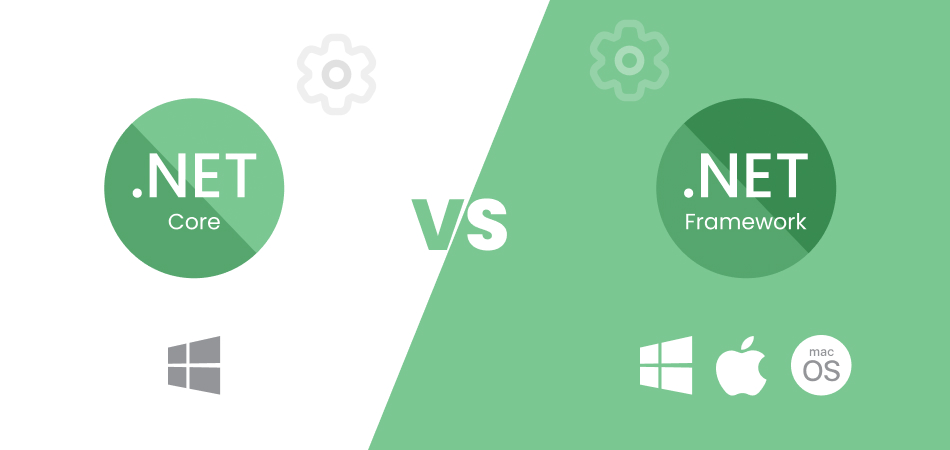If you are exploring different front-end technologies for your next project, chances are you have heard about React.js. But with so many JavaScript libraries available you must be wondering whether React.js is the right choice for your next project?
Created by Jordan Walke, React.js is undoubtedly an efficient, declarative, and flexible open-source tool that is best suited for building speedy, scalable, and painless front-end web applications.
Since its launch, React.js has become very popular in the front-end development space, with many developers considering it to be the ultimate solution. According to a study by Statista in 2022, React is the second most widely used framework globally, surpassed by Node.js.
As of today, there are over 21,245,471 live websites that run on the React.js framework.
Some of the biggest names in the industry, such as Apple, PayPal, Uber Eats, Airbnb, and Netflix, utilize React.js for their software development.
Its popularity stems from the fact that it assists with the construction of interactive and dynamic interfaces while providing a robust ecosystem with tools like Redux for flawless state management. Undoubtedly, React.js has earned its way into modern web development, fostering agile, scalable, and coherent front-end solutions.
A Brief History of React.js
In 2011, Facebook was facing the challenge of providing its heavy user base with a unique and well-organized experience while managing continuous updates. To address this issue, Jordan Walke, a software engineer working at Facebook, created FaxJS.
This was the inception of what is now known as React.js. Over time, the framework proved to be an excellent solution for ongoing concerns and provided users with a richer experience.
In 2012, after Facebook acquired Instagram, React was converted into an open-source. Jordan Walke introduced the official launch of React in late May 2013, and it was widely experimented with across the industry.
By 2015, React had become a “good” and “stable” programming resource and made headlines after Netflix published an article in support of it. Later, Airbnb also vouched for React.
Today, React is widely used worldwide, and the library has evolved significantly since its initial launch.
What are the Major Features of React.js?
Before we get into why React.js is so in demand, let us look at its key features. This will help you understand React.js better.
1. Virtual DOM (Document Object Model)
The virtual DOM is a virtual depiction of the actual DOM.
What is a DOM?
DOM stands for “Document Object Model”. It is a structured representation of the HTML element that exists on a web page or a web app. The DOM solely represents the entire UI (user interface) of your web or mobile application.
So, every time there is any update or change in the real application, the virtual DOM gets updated instead of the real DOM. The primary role of Virtual DOM is to quicken the update process.
Isn’t it double work? Why not let the real DOM get updated? Why there is a need for a replica in the shape of a virtual DOM?
The genuine answer- is that virtual DOM is necessary and is much faster and more productive, here is why.
How Virtual DOM Works?
When new UI (user interface) elements are added to an application, a virtual DOM is formed. The virtual DOM is represented in the shape of a tree (literally). Each UI element appears as a node on this tree. This (same) tree is then compared with the previous existing virtual DOM tree.
After all of this is done and dusted, the virtual DOM calculates the finest method to execute these changes to the real DOM. The goal of the virtual DOM stands here to minimize operations on the real DOM. Hence, reducing the pressure or performance cost of updating the real DOM.
Check the below image for reference:

It is an intricate process of linking several DOM classes and matching virtual representation to virtual operations.
The primary goal of the virtual DOM is to speed up the update process.
As SPAs and web apps got more required, smaller interactions started to occur on the page. Because the page does not reload fast enough in SPAs, developers must update a single element – the one with which users interact – but this is not what a DOM does.
2. JSX
JSX formally known as JavaScript Extension is a markup syntax that narrates the appearance app’s interface. It helps to construct syntax like HTML and is utilized to build React components effortlessly by developers. It is regarded as the most reliable and best feature of React.js as it makes the process of writing building blocks comparatively smooth.
3. One-way Data Binding
One-way data binding is valuable for managing the information passing flow within its components. For example; it’s a one-way street where data flows in one direction only, from the parent component to down to its child components.
One-way data binding ensures a clear and concise data flow which makes it easier to understand and debug. Whatever changes occur in the parent component reflects automatically in the child component. This elevates code stability and untangles the development process.
Overall, one-way data binding is crucial to avail a structured and organized approach to binding data, which plays a massive factor in the framework’s capabilities.
4. Declarative React.js the Powerhouse of UI Development
React.js has earned massive admiration among UI developers due to its immense capacity to be flexible, reusable, and fuel-efficient. The main reason is that it follows a component-based architecture that allows developers to break down complex UI into much smaller, separate, and useful components.
With React.js developers can experiment and focus completely on the imperative aspects and do their best without worrying about updates. This freedom to carry out significant development processes enhances code outcomes and decreases the chances of bugs and errors.
Reasons Why React.js Can Be the Best Choice for Your Business?
Below are the primary reasons that give React.js the upper hand over other frameworks. If you plan to go with React development, it’s salient that you make yourself aware of the benefits of React.
1. Helps to Create Rich User Interfaces
Today, the quality of the user interface in an application plays an important role. If the user interface is poorly designed, it lowers the chances of an application’s success. User experience is crucial in all circumstances.
If you are thinking of starting a business, you must focus on providing a fulfilling user experience. When it comes to developing a mobile app for your business, the quality of the user interface is the topmost priority. With a poor user interface, your app wouldn’t survive days, forget decades.
On the other hand, if you hire skilled React.js developers, they can set up a high-quality UI. With an exceptional UI, your business app’s chances to shine increase immediately.
Nowadays, especially, when users’ expectations from a business are at their peak, it becomes essential to work on qualities that make the majority of users satisfied. Therefore, UI stands out as a prime concern. React.js is the perfect choice for that as it helps to manufacture a robust user interface via its declarative components.
2. Simplifies Writing Code with Declarative Syntax
React’s declarative syntax is a breath of fresh air for developers. The framework allows developers to focus on the “what” rather than the “how.” React plains code comprehension and maintenance.
This declarative approach boosts collaboration among team members, eventually accelerating the development process, and proves beneficial for those transitioning from imperative programming styles.
3. Comes With Reusable Code which Uplifts Developers’ Productivity
Regular updates consume time and can be a cause of headaches for developers. To address this issue, React was born. And it has stood the test of time in that department.
The component and code reusability that comes with the React framework gives space to developers to redeploy the same digital objects. This same approach breaks down complicated user interfaces into “smaller reusable components”.
The dynamic and futuristic process drives excellent code maintenance and growth as every component has its “own” internal logic. That makes it easy to edit, maintain, and look after- which leads to faster results. So, if you are planning to develop a web application, then with React as a framework, you don’t need to worry. Professional React.js developers utilize the framework to its best capability.
4. Super Easy to Learn
In general, learning code language is difficult. But React stands out as the best option here, especially in contrast to other popular front-end frameworks like Angular and Vue. One of the prime reasons why React is so in demand is because of its easy curve of learning.
The harder a language is to learn, the more time it takes to work on and build on.
If you are keen to learn the basic concept of React, there are hundreds of React JS tutorials available on YouTube. Watching React tutorials can also guide you in knowing React features more lightly.
5. React Embody Worthwhile Toolset
The manifold advantages of React.js arise from its ownership of useful tools that play a big role in revolutionizing web development. React.js, a JavaScript library developed by Facebook, has become the go-to choice for many brands for building interactive and dynamic user interfaces.
Its features, such as the Virtual DOM, enable rendering, giving faster performance and a seamless user experience. One of the standout features is the component-based architecture, which encourages the reusability of code. This, coupled with a unidirectional one-way data flow, streamlines development and makes it more intuitive.
Moreover, React’s compatibility with other libraries and frameworks promotes impeccable integration into existing projects. Other important React tools like Redux and React Router are the icing on the cake. They eliminate the unnecessary need to manage frequent updates and help in debugging along routing. The library’s solid commitment to reducing bugs in React.js has been commendable. All these React tools’ key benefits have made them indispensable for modern-day web development.
6. It’s SEO-friendly
Nowadays, businesses prioritize SEO to rank high on Google. According to Moz, a website’s page load time needs to be quick to rank well on Google. React, when compared to other frameworks, helps to decrease page load time. This is a crucial factor for businesses to achieve a good position on Google SERPs (search engine ranking page results).
Moreover, React.js offers support for meta tags and other SEO-related optimizations, which makes it easier to optimize apps. All of these features come in handy to attract organic traffic to the app, increase its user reach, and improve its online visibility.
7. 24-hour Unshaken Community Support
At the heart of React.js lies a solid foundation supported by a thriving community, making it an obvious choice for web development. This strong community support ensures that developers get timely support and solutions to their issues whenever required.
Like other frameworks, the React community also continuously contributes to the evolution of React, meaning the invention of new features. This funding environment motivates developers to share knowledgeable information through online forums and social media platforms.
As of now, React has a whooping 217k likes on GitHub and over 1600 regular contributors. Apart from this, React developers share their concerns, questions, or answers regularly on giant platforms like Quora. If you get stuck with a problem, you can always find a solution. With such a robust and supportive community, it’s no wonder that React has become a go-to framework for web developers looking to build robust web applications.
To Conclude
Thank you for reading this blog. We hope that after this blog, you have gained clarity on the React.js framework.
In summary, React.js is a powerful tool that has revolutionized the front-end development space. Its ability to create interactive and dynamic interfaces while providing a robust ecosystem makes it the ultimate solution for web developers.
React.js is undoubtedly the best front-end framework to choose for your business web development project. There are many key benefits attached to it that can kickstart your SEO and increase your chances of higher online visibility.
So, what are you waiting for, hire a React JS developer today and get your project up and running.
Remember, that hiring the best React JS development company can be favorable to your business project success. And what better option than us? We have a team packed with seasoned React.js developers. To get in touch, feel free to e-mail us.



